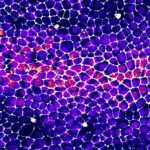Link to Pubmed [PMID] – 30609052
Biol. Cell 2019 Jan;
Cells and tissues are exposed to multiple mechanical stresses during development, tissue homoeostasis and diseases. While we start to have an extensive understanding of the influence of mechanics on cell differentiation and proliferation, how excessive mechanical stresses can also lead to cell death and may be associated with pathologies has been much less explored so far. Recently, the development of new perturbative approaches allowing modulation of pressure and deformation of tissues has demonstrated that compaction (the reduction of tissue size or volume) can lead to cell elimination. Here, we discuss the relevant type of stress and the parameters that could be causal to cell death from single cell to multicellular systems. We then compare the pathways and mechanisms that have been proposed to influence cell survival upon compaction. We eventually describe the relevance of compaction-induced death in vivo, and its functions in morphogenesis, tissue size regulation, tissue homoeostasis and cancer progression.
